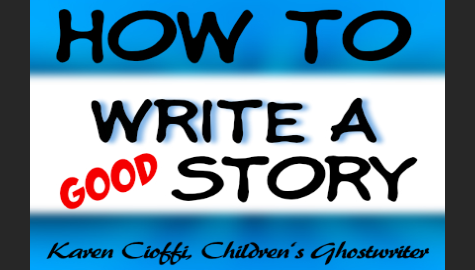Contributed by Aaron Shepard
Good writers often break rules—but they know they’re doing it! Here are some good rules to know.
Theme
A theme is something important the story tries to tell us—something that might help us in our own lives. Not every story has a theme, but it’s best if it does.
Don’t get too preachy. Let the theme grow out of the story, so readers feel they’ve learned it for themselves. You shouldn’t have to say what the moral is.
Plot
Plot is most often about a conflict or struggle that the main character goes through. The conflict can be with another character, or with the way things are, or with something inside the character, like needs or feelings.
The main character should win or lose at least partly on their own, and not just be rescued by someone or something else. Most often, the character learns or grows as they try to solve their problem. What the character learns is the theme.
The conflict should get more and more tense or exciting. The tension should reach a high point or “climax” near the end of the story, then ease off.
The basic steps of a plot are: conflict begins, things go right, things go WRONG, final victory (or defeat), and wrap-up. The right-wrong steps can repeat.
A novel can have several conflicts, but a short story should have only one.
Story Structure
At the beginning, jump right into the action. At the end, wind up the story quickly.
Decide about writing the story either in “first person” or in “third person.” Third-person pronouns are “he,” “she,” and “it”—so writing in third person means telling a story as if it’s all about other people. The first-person pronoun is “I”—so writing in first person means telling a story as if it happened to you.
Even if you write in third person, try to tell the story through the eyes of just one character—most likely the main character. Don’t tell anything that the character wouldn’t know. This is called “point of view.” If you must tell something else, create a whole separate section with the point of view of another character.
Decide about writing either in “present tense” or in “past tense.” Writing in past tense means writing as if the story already happened. That is how most stories are written. Writing in present tense means writing as if the story is happening right now. Stick to one tense or the other!
Characters
Before you start writing, know your characters well.
Your main character should be someone readers can feel something in common with, or at least care about.
You don’t have to describe a character completely. It’s enough to say one or two things about how a character looks or moves or speaks.
A main character should have at least one flaw or weakness. Perfect characters are not very interesting. They’re also harder to feel something in common with or care about. And they don’t have anything to learn. In the same way, there should be at least one thing good about a “bad guy.”
Setting
Set your story in a place and time that will be interesting or familiar.
Style and Tone
Use language that feels right for your story.
Wherever you can, use actions and speech to let readers know what’s happening. Show, don’t tell.
Give speech in direct quotes like “Go away!” instead of indirect quotes like “She told him to go away.”
You don’t have to write fancy to write well. It almost never hurts to use simple words and simple sentences. That way, your writing is easy to read and understand.
Always use the best possible word—the one that is closest to your meaning, sounds best, and creates the clearest image. If you can’t think of the right one, use a thesaurus.
Carefully check each word, phrase, sentence, and paragraph. Is it the best you can write? Is it in the right place? Do you need it at all? If not, take it out!
The strongest children’s stories have well-developed themes, engaging plots, suitable structure, memorable characters, well-chosen settings, and attractive style. For best results, build strength in all areas.
Originally published at:
http://www.aaronshep.com/youngauthor/elements.html
Writing – 6 Essential Steps to Publication
Writing with Focus
Ghostwriting Warning – Don’t Do This at Home

I’m a working children’s ghostwriter, rewriter, editor, and coach. I can help turn your story into a book you’ll be proud to be the author of, one that’s publishable and marketable.
OTHER HELP I OFFER:
HOW TO WRITE A CHILDREN'S FICTION BOOK
A DIY book to help you write your own children’s book.
PICTURE BOOK, CHAPTER BOOK, MIDDLE GRADE COACHING
Four to twelve-week coaching programs.
WRITERS ON THE MOVE SELF-PUBLISHING SERVICE
Self-publishing help for children’s authors.
You can contact me at: kcioffiventrice@gmail.com. Or give me a call at 347—834—6700. (Please leave a message- I’ll get back to you as soon as I can.)



1 thought on “6 Tips to What Makes a Good Story”